8 books to help you through these last cold days of winter.
At this point in the year, you may be itching for spring—but it’s still February and there’s still some cold for us to endure. But no matter what it may feel like when you put your foot in a snowbank, that cold can be a good, and even a necessary, thing. To prove it, I’ve collected some wintery books to take you through the remainder of the season. These books are wintery not only in their setting, but in their energy—each evoking a sense of something scarce and spectral and inscrutable. They have in them a kind of iciness, that pushes you headlong into different kinds of cruelty (often embedded in the day-to-day) and compels you to look at it all in the eye. They may even entice you to stop wishing winter away, instead to sit with something dark and dimming, just for a little while. Enjoy:
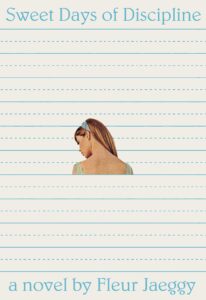
Fleur Jaeggy, Sweet Days of Discipline
Jaeggy’s classic is an unflinching exploration of the iciness and cruelty of girlhood and young love. Set in postwar Switzerland, the novel follows an unnamed narrator and her obsession with Frédérique, the new student at the narrator’s boarding school in Appenzell. Jaeggy sharply captures the jagged dimensions of its eeriness: “One winter afternoon—we were sitting on the stairs—Frédérique took my hands and said: ‘You’ve got an old woman’s hands.’ Hers were cold. She looked at the back of my hands: you could count the veins and the bones. She turned them over: they were shriveled up. I can hardly describe how proud I was to hear what for me was a compliment. That day, on the stairs, I knew she was attracted to me.”
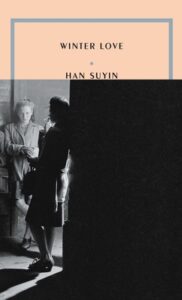
Suyin Han, Winter Love
Han’s novel, set during a bitter winter in 1944 London, follows Red, a young college student who falls in love with Mara, her married classmate. Steeped in a pool of volatile emotions—from jealousy to doubt to tangled-up frustrations—and set against the gray, grim austerity of fascism and war, the novel walks to the edge of enduring rubble, and compels us to stay and look.

Jessica Au, Cold Enough for Snow
Au’s novel is a book about a mother and daughter. They go to Japan together, sightsee, head back home. But it’s also—it’s actually—about the quiet things running underneath: memory, hunger, what we inherit from one generation to another. There’s a haunting quality to it all—you feel it pulse against the simple, almost sparse, plot; what you’re reading isn’t quite what’s on the page, but what’s beneath the prose.
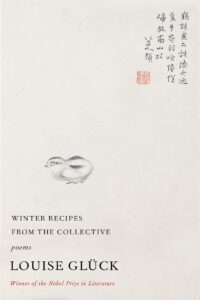
Louise Glück, Winter Recipes from the Collective
Glück’s most recent collection is a meditation on ending, and staying with that ending. Her poems remind you that “in spring, anyone can make a fine meal.” But what about in the winter? So she takes us “downward and downward and downward and downward, moving alongside death and uncertainty, and “simply falling.”
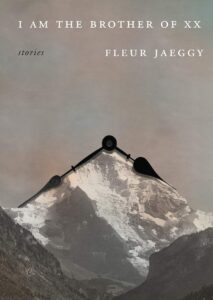
Fleur Jaeggy, I Am the Brother of XX
Jaeggy’s short (sometimes very short) stories are, like her novel, obsessed with the cold, with water, and with relationships that toy the line between cruelty and tenderness. Whether it’s the betrayed younger brother or the austere, detached five-year-old girl or the man who claims, “winter, the real season of the year,” the characters in Jaeggy’s collection fold themselves into the cold, dreary landscapes, and bind the prose with a hard sort of inscrutability.
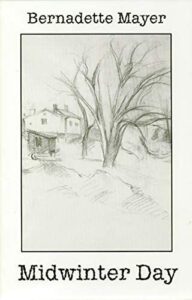
Bernadette Mayer, Midwinter Day
Alice Notley said it best when she said Midwinter Day “is an epic poem about a daily routine.” It’s an epic of how we move from one to another, the small little knots and tips that whirl into what we call a day. Like in Au’s book, it’s what runs through them, runs underneath them that we find in the book. Mayer writes, “this guilty beetle/ Is a frightening thing/ When it shows its wings/ And leaps like the story of a woman who/ once in this house/ Said the world was like a madhouse/ cold winds blowing/ And life looks like some malignant disease.”

Han Kang, The White Book
Though Kang begins writing the book in the spring, making a list of white things, the grief at the heart of the book—even as it moves from place to place, memory to memory—is wintery; Kang’s meditation on the color white, and the death of her older sister, who lived only two hours, is haunting. She writes, “The only view my window offers is the blurred suggestion of two poplars, ink-wash contours wavering four or five meters up from where the street lies hidden; all else is white. But can we really call it white? That vast, soundless undulation between this world and the next, each cold water molecule formed of drenched black darkness.”
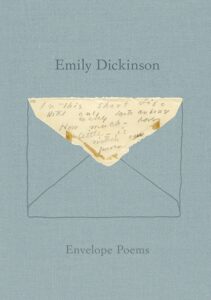
Emily Dickinson, Envelope Poems
Winter is as much about the cold as it is about sitting with ruins—with scrap and fragments and sediments. Dickinson’s Envelope Poems is just that. Inscrutable and melancholic, the poems gesture to something that is no longer here, that doesn’t need to be shown to us readers. It’s a lesson in reading with absences, with open gaps and icy slabs.





